:max_bytes(150000):strip_icc():format(webp)/african-american-woman-opening-packages-of-shoes-on-sofa-580503483-5a735094d8fdd50036b63f8a.jpg)
How to Stop Google Chrome from Tracking Your Location On Oppo Reno 9A? | Dr.fone

How to Stop Google Chrome from Tracking Your Location On Oppo Reno 9A?
Do you know your web browser is continually sharing your actual location online? You might not have noticed, but the number of websites using your location has increased. As you are well aware of the dangers of the internet, it doesn’t make sense to turn your Chrome into a beacon for ill-intentioned people. Luckily, it is possible to fake a location on Chrome with the right tool.
Are you wondering how to fake the browser location or which tool to use? You can get all your answers by reading this article till the end.

Part 1: How Does Chrome Know Your Location?
Before discussing Google Chrome’s fake location, it is important to know how Chrome detects your physical location. Google Chrome uses many ways to pinpoint your exact location, like your IP address, GPS, Wi-Fi, Bluetooth, and Cell Tower data. Every internet connection has an IP address bound to a location that enables Chrome to identify your location.
Similarly, GPS location can easily be tracked if your phone device has it enabled. All the Wi-Fi and Bluetooth connections around you also have location information embedded in them. They can help Chrome track you as long as your device can detect them. If you use cell data, Google Chrome can also track you through cell towers.
Part 2: How to Hide Location Services in Chrome?
If you are worried about Google Chrome detecting your physical location and sharing it with websites and apps, you can hide it easily. The process of hiding your location on Google Chrome is simple, even if you are using multiple devices. Below is the step-by-step process of hiding location services in Google Chrome on computer, Android, and iOS devices.
Method 1: For Laptop and Desktop PCs
Step 1: Launch Google Chrome on your computer and click the “Three Dots” icon to open the Google Chrome Settings. Here, tap “Privacy and Security” from the left sidebar and select “Site Settings.”

Step 2: Navigate to “Permissions” and click on “Location.” To hide the location on Google Chrome, select the “Don’t allow sites to see your location” option.

Method 2: For iPhone or iPad
Step 1: Navigate to “Settings” on your iPhone and open it. Scroll down until you find the “Chrome” app option and select it.

Step 2: Press “Location” on the next screen to open the location options for Google Chrome. Here, choose “Never” to stop Google Chrome from detecting your location.

Method 3: For Android
Step 1: Open Google Chrome on your Oppo Reno 9A, press the “Three-Dots” icon, and tap “Settings” from the options.

Step 2: In Chrome Settings, press “Site Settings.” Now select “Location” and hide your location by toggling off the “Location” option.

One way to protect your privacy and stop websites from tracking your location is to turn off the location, but it has many disadvantages. If you have turned off your location, you can’t use any location base service like food delivery, e-shopping, ride-sharing, etc. That’s why it is better to use a fake location on your browser. Below we have explained four methods for Chrome fake location.
Method 1. Best Tool to Fake Chrome Location On iOS and Android Phones
The easiest and quickest way to fake your location on Google Chrome is to use Dr.Fone - Virtual Location . Since smartphones contain a wide range of apps that require location access, it provides a stable way to fake Chrome locations on Android and iOS phones. No website or app will be able to detect that you are using a fake location when using Dr.Fone - Virtual Location for faking GPS location.
Key Features
- Dr.Fone - Virtual Location can be used for any social media app like Facebook, Twitter, or Instagram with a fake location.
- With the help of this tool, you can also spoof real-time tracking apps like Life360 to protect your privacy.
- If you are an iPhone user, you don’t have to jailbreak your iPhone to spoof your device’s location.
How to Fake Chrome Location On iOS/Android Phones via Dr.Fone - Virtual Location
Faking your Chrome location with Dr.Fone - Virtual Location is very straightforward. You only need the Dr.Fone mobile toolkit and a USB cable to connect your Oppo Reno 9A. Follow these steps to spoof Chrome location on Android and iOS phones:
Step 1: Connect Your Android/iOS Device to Your Computer
Connect your Android or iOS phone to your computer using a USB cable. Launch the Dr.Fone robust toolkit on your computer and select “Virtual Location.”

Step 2: Activate the Teleport Mode
Press “Get Started” on the next page to open the map window. First, select your actual location by pressing the “Center On” icon from the right sidebar. Afterward, click on the “Teleport” icon from the top right corner to activate the Teleport Mode.
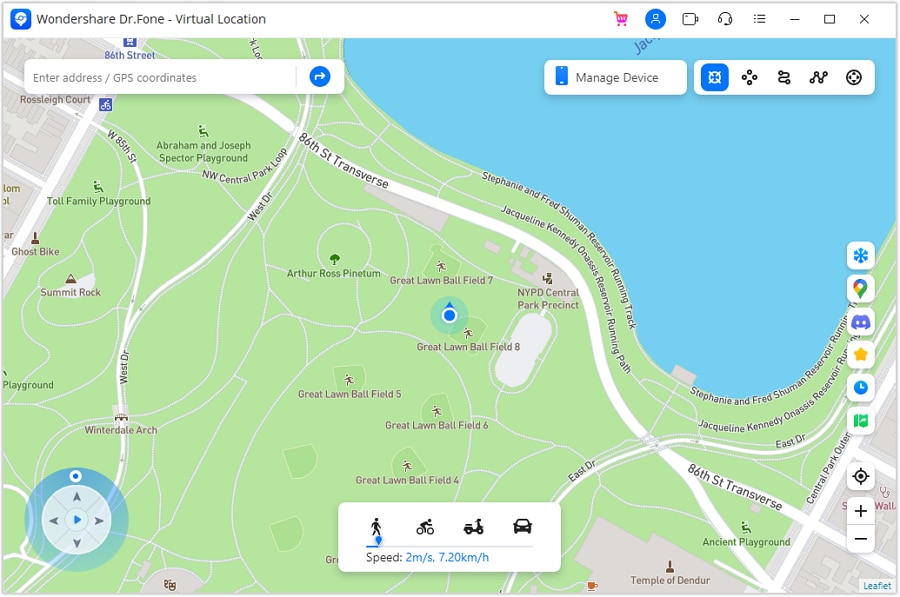
Step 3: Add the Desired Fake Location
Once the Teleport Mode is activated, add your desired location and press “Go.” Your desired location will open on the map. Select it, and a pop-up window will appear where you need to press “Move Here.” With that, your Android or iPhone’s Chrome location has been changed.
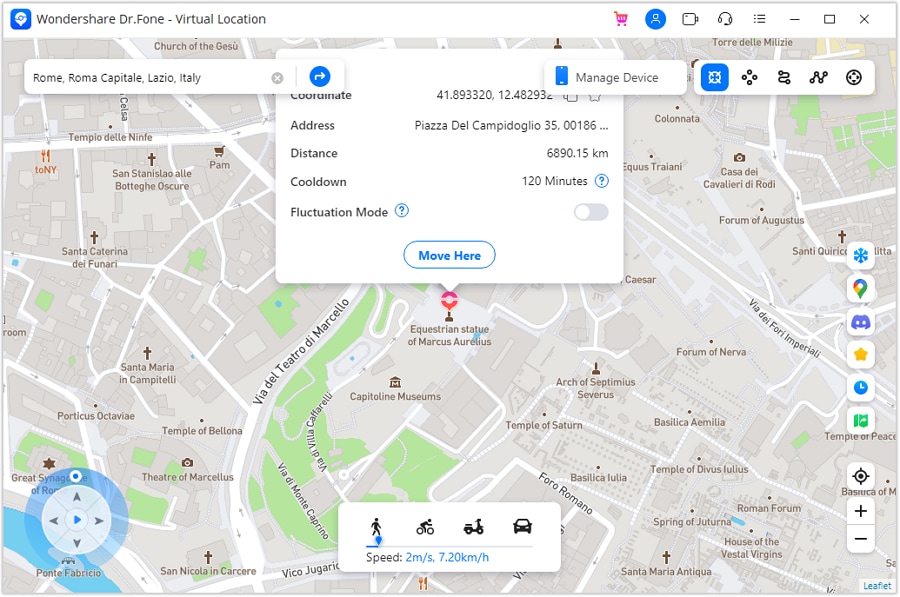
Method 2. Manually Change Your Location Using Google Chrome DevTools
It is also possible to fake browser location on Chrome using the Google Chrome Developer Tools. It is a built-in feature of Chrome and can be used to manually change or turn off your browser’s location. Follow these steps for changing location on Chrome with DevTools:
Step 1: After opening Google Chrome, click the three-dots icon from the top right corner. It will open the Chrome menu where you need to select “Developer Tools” after clicking “More Tools.”

Step 2: A window will open on the right side with all the developing tools you can use in Chrome. Click on the three-dots icon located near “Console” in the bottom left corner of the window. Choose “Sensors” from the pop-up menu.

Step 3: Access the newly selected “Sensor” option, and here you can change the browser’s location by either selecting a Google’s pre-set location or adding your desired location manually. Once the location is selected or added, your browser’s location will change.

Limitations
- The interface of the Google Chrome DevTools can be very confusing and overwhelming for non-technical users.
- Apart from pre-added locations, it can be hard to add a specific location as your fake location.
Method 3. Fake Your Location Using Chrome Extension
Many fake location Chrome extensions are available on Google Chrome which can be used to alter your location on Chrome. You can find these extensions on Google Chrome Web Store and add them directly to your browser. Below we have explained the steps for using such an extension “Location Guard “ to fake your location on Google Chrome:
Step 1: Open the “Location Guard” on Chrome Web Store and click “Add to Chrome” to add it to your browser. Once the “Location Guard” extension is added, open it and press “Options.”

Step 2: In the options, you can choose different options like Privacy Levels, Protection Area, and Time for Location Cache. It is recommended you choose a higher level for more protection.

Step 3: You can also use the “Fixed Location” feature to set up a fake location as a permanent location for your browser. The fixed location can be added by using the market or clicking on the desired place on the map.

Limitations
- Location Guard doesn’t protect your IP address. It means some websites can still detect your real location using the IP address.
- The app is not updated for quite a while, that’s why the map of the fixed location feature is quite restricted.
Method 4. Spoof Your IP Using a VPN Server
Another way you can fool websites and your browser by displaying a fake location online is to use a VPN server. VPNs fake your IP address to fool websites and apps into detecting your location. NordVPN is a VPN that can be used to spoof your IP by following these steps:
Step 1: Download and install NordVPN on your computer or phone and log in using your account. If you don’t have a NordVPN account, you must create one first.
Step 2: If you want to just change the location of your device, you can select “Quick Connect.” Using it will enable the program to automatically find the most suited fake location for you.

Step 3: You can also choose the desired location as your fake Chrome location in NordVPN. To do that, scroll down the list of countries and locations and choose your desired locations to connect to.
Limitations
- NordVPN can only spoof your IP address and will not work for geo-restricted applications.
- Using a VPN usually affects your internet speed and can make browsing slower and more difficult.
Part 4: FAQs
1.What is Geolocation?
Geolocation is a term used for the process of pinpointing the location of a device connected to the internet. The location can be determined using methods like IP address, GPS, and mobile tower data. Apps and websites commonly use it to provide location-based services.
2.What is the HTML5 Geolocation API?
The HTML5 Geolocation API is a browser API used to determine a user’s geographical location. Developers use it to build location-aware websites and apps that use users’ locations as the basis for providing their services. It can detect location through GPS, Wi-Fi, Bluetooth, IP addresses, etc.
3.Why should you hide or spoof your Location?
Hiding or spoofing your location protects your privacy and stop application and websites from tracking you. It also allows you to access geo-restricted apps and play location-based games. You can also fake your location to get the latest updates of your favorite apps.
Conclusion
The fact that Google Chrome in your devices can track your location with an accuracy of up to 20 meters is very unsettling for users. Even when you try to be careful in granting location permissions to apps and websites, many can still bypass this by adding location access requirements in terms and conditions.
That’s why having a tool like Dr.Fone - Virtual Location to fake GPS online is essential nowadays. It can ensure your privacy and helps in protecting you from the dangers of the internet.
Apply These Techniques to Improve How to Detect Fake GPS Location On Oppo Reno 9A
GPS spoofing has become a common problem with companies because it often leads to inaccurate information. It can lead to costly errors and losses due to inaccurate GPS details. Hence, it’s important to learn how to detect fake GPS to ensure the accuracy and integrity of your data at all times.
In this article, we’ll show you how to apply clear and easy security measures to detect fake GPS locations. We’ll also use anti-fake GPS or other methods to prevent malicious actors from fooling your figures. Read below to learn more.
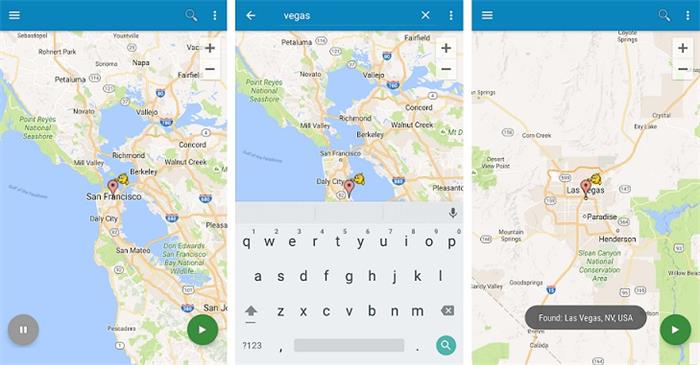
Part 1: What is Location Spoofing?
Location spoofing is a way for people to manipulate the location of GPS data shared by their devices. Faking your GPS is used for various actions, including accessing geo-blocked contents of an application, circumventing games or movies with country restrictions, or maintaining your privacy.
Using fake GPS software sends out false GPS signals from your device, hiding or changing your location. This sidesteps security as well as trust and safety terms of applications that rely on location signals.
Part 2: Ways to Fake Your GPS Location on Android and iOS
While most smartphones today have built-in methods to track your location, there are several ways to fake your GPS location, whether you’re using an iOS or Android. For whatever purpose you need to, you can download apps on the App Store or Google Play to hide your current location.
You can learn more about spoofing apps to prank your friends or play location-based games such as Pokemon Go to get more rewards.

Try to find a reliable spoofing app? The good news for you is that there is a powerful tool, Wondershare Dr.Fone – Virtual Location , which allows a one-click process to effortlessly spoof your GPS location to any destination for enhanced enjoyment in AR games.
This versatile tool effortlessly integrates with popular location-based apps such as Pokémon GO, Snapchat, Instagram, and more. Take control with the ability to simulate GPS movement along a route you draw. You can use its joystick feature to flexibly mimic GPS. It is fully compatible with the latest operating systems, supporting Android 14 and iOS 17.
Noteworthy Aspects Wondershare Dr.Fone - Virtual Location
- Wondershare Dr.Fone can maintain a record of all the routes you follow and the locations you visit to ensure you can always access them again.
- This location spoofer contains features such as a one-stop route and multi-stop route to help you mimic realistic movement when playing AR games.
- To ensure you are able to spoof your location and movement, Wondershare Dr.Fone allows you to choose between walking speed and driving speed.
Steps for Faking Your GPS Location via Wondershare Dr.Fone - Virtual Location
Spoofing your location becomes effortlessly achievable through Dr.Fone - Virtual Location. This has to do with its innovative algorithms and thanks to its user-friendly approach. The process of faking the location involves the following steps:
Step 1: Access Dr.Fone - Virtual Location and Move to Toolbox
Begin with the launch of Dr.Fone - Virtual Location on your computer and establish a connection with your Android or iOS device. Navigate to the map screen and select the “Teleport Mode” icon, which is situated as the first option in the toolbar near the top-right corner. Now, start the process by tapping the search bar at the top left corner, inputting your desired location, and hitting “Enter.”

Step 2: Move to the Targeted Location and Verify It
Upon completion of the initial setup, proceed to teleport to the targeted location by clicking “Move Here” on the map screen. This action prompts the cursor to relocate to the specified location on the map. It also simultaneously adjusts the location of your Android or iOS device. To validate the successful location change, access your smartphone and open a map application.

Part 3: Why is GPS Spoofing a Problem?
Faking your GPS has its advantages, primarily protecting your privacy.
However, if you’re on the receiving end of a fake GPS signal, you need to detect any spoofing attempts before it’s too late. You need to have a security measure to ensure data you’re receiving is coming from a legitimate source instead of a malicious one. It is especially important for large companies engaging in food delivery, gaming, social media, financial services, etc.
Here are some reasons why your company should be wary of GPS spoofing.
Food Delivery
Couriers who use GPS spoofing can trick food delivery apps into allowing them to accept orders they otherwise would not have access to. They may also gain an unfair advantage to gain priority in order queues and report longer rides to earn more from the platform. In addition, a more egregious issue is couriers charging for deliveries that weren’t made.

Gaming
Using GPS spoofing in MMORPGs enables gamers to take advantage of faking their position without moving into the comforts of their own home. This can lead to more in-game rewards that are otherwise difficult to achieve without GPS spoofing.
Location spoofing also allows cheaters to use hundreds of mobile devices to collude and share in-game information to scam other players.
Social Media
Having a fake GPS on dating apps allows users to unlock more users on their profile to match with in other places. It can be dangerous if scammers or fraudsters use fake GPS to trick people into concealing their actual location.
Financial Services
Most financial institutions across the globe use location data to verify users to prevent fraud. Having inaccurate data is a major security beach, especially when handling financial service apps on the internet.
There are various ways to protect yourself from being on the other end of a fake GPS location. You can easily use specialized apps, including mock location detection APKs if you’re on Android. These anti-spoofing GPS apps help detect if someone is providing fake GPS locations. However, if this is not available to you, there are several ways you can mitigate malicious actors by applying some safeguards.

Here are some of the methods you can take advantage of.
- Cross-reference location data from multiple sources to detect fake GPS locations. You can cross reference from GPS, Wi-Fi, and cell tower triangulation to analyze accurate GPS.
- Analyze abnormal patterns in location data presented to you from sudden jumps in location or having unrealistic speeds during movement.
- Verify the accuracy of GPS by comparing location data to known landmarks, including buildings, bridges, or roads.
- Using a dedicated GPS simulator and comparing results to expected from provided data.
- Have a security measure to detect GPS spoofing apps installed on a user’s smartphone.
While the methods to detect GPS locations are presented above, it’s important to remember that detecting fake GPS locations is difficult and requires you to combine different methods. You can easily detect mock locations on Android, but the methods available if you’re on a different device will vary depending on the resources at your disposal.
Conclusion
Faking your GPS is easy nowadays. You can download an application and tinker with a few settings on your smartphone to start GPS spoofing. For secure virtual navigation, make Dr.Fone - Virtual Location your first choice. As a result, anti-spoofing in GPS is are the rise, especially if you’re on the receiving end of the data.
Knowing the telltale signs of a fake GPS is a must to ensure you will not be deceived when transacting online. In the end, the most effective way to detect if someone is faking their GPS is by checking if their smartphone has a GPS spoofing app.
How To Use Special Features - Virtual Location On Oppo Reno 9A?
Wondershare Dr.Fone - Virtual Location comes with multiple unique features that can be used to enhance the flow of spoofing location. With all these amazing features, you can easily change your iOS location without blinking an eye. Rather than making things complicated, Dr.Fone makes it easy for you to manage operations when you perform actions like changing Android locations.
Part 1: Circle Route (For Multi-Stop Route)
The circle route feature is under the multi-stop route mode. When your starting point is close to the ending point, a pop-up asks if you want to set up a circle route. Click Yes to create a circular path on the map.

Part 2: Realistic Mode (For One-Stop Route and Multi-Stop Route)
This particular feature makes the simulation look realistic with the ability to fluctuate the speed of the simulation. If you wish to turn on realistic mode for the one-stop or multi-stop route, look for the respective checkmark option in the panel on the left.

Part 3: Fluctuation Mode (For Teleport Mode)
Whenever you are teleporting your smartphone device to another location, you can try using the fluctuation mode feature offered against it. As you activate Teleport Mode from the top-right section and search for a location, you will discover the Fluctuation Mode toggle in the confirmation tab. Turn on the toggle to slightly switch the location from the selected point to show realistic motion.

Part 4: Cooldown Timer (For Teleport Mode and Jump Teleport Mode)
While teleporting the location of your smartphone to different places for playing games like Pokemon Go, you are bound to activate a cooldown timer within your location-changing app to show realistic movement. By locating the Cooldown Timer on the right pane of icons, activate it, and this feature will automatically calculate the cooling time by measuring the distance between your destination and the starting point.

It is recommended not to start the movement until the cooldown time is completed to avoid unnecessary bans. Moreover, you can also activate the Auto jump after cooldown in the Jump teleport mode after turning on the Cooldown Timer.
This option will automatically jump you to the next destination once the timer ends. It is helpful for games like Pokemon Go, where the game servers can detect frequent jumps with no cooldown time.
Part 5: Import/Export GPX File
You can also import and export specific navigated locations from Dr.Fone in the form of GPX files. While you can export GPX files for keeping a record of your location, you can also import such files for inserting specific locations to simulate or teleport to. Find out how you can import and export GPX files with this location-changing application:
Step 1Export the GPX File
If you have defined a proper location to simulate at a particular instant using Dr.Fone - Virtual Location, you can have this location exported by clicking the Export icon on the top of the left panel. This will open a window where you can set the location for saving the GPX file.

Step 2Import a GPX File
For importing a GPX file on the platform, click the Import button on the right pane. As this opens a window, select the GPX file you wish to import to the platform.
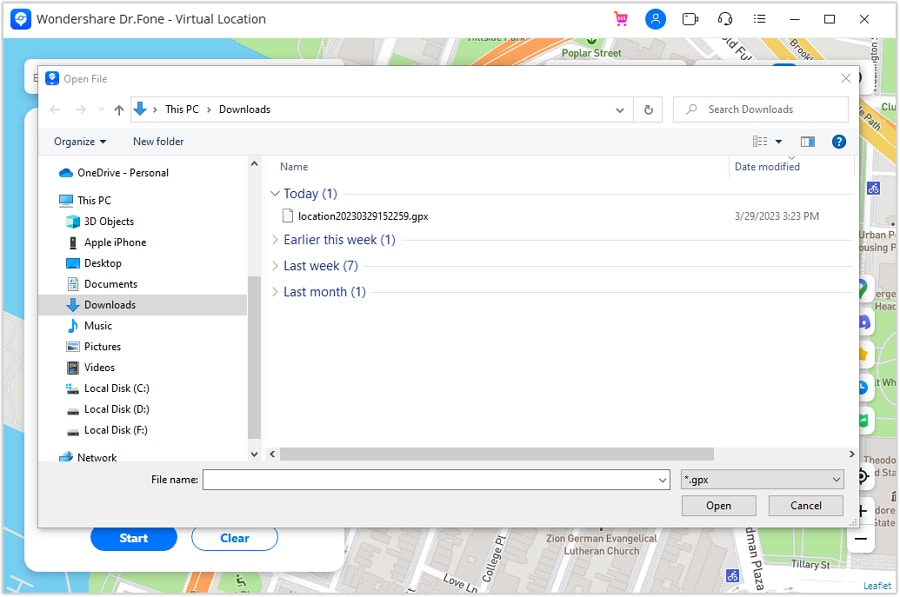
Step 3Wait for the File to be Read
Wait for a moment until Dr.Fone - Virtual Location recognizes the specific locations within the GPX file and displays them on the map.

Part 6: Historical Records
If you want to use a similar track record on your smartphone again, you can access the historical records saved on the platform for easy access.
Step 1Open Historical Records
Click the Historical Records button on the right pane to access the entire history involving the connected smartphone and the location spoofing platform.
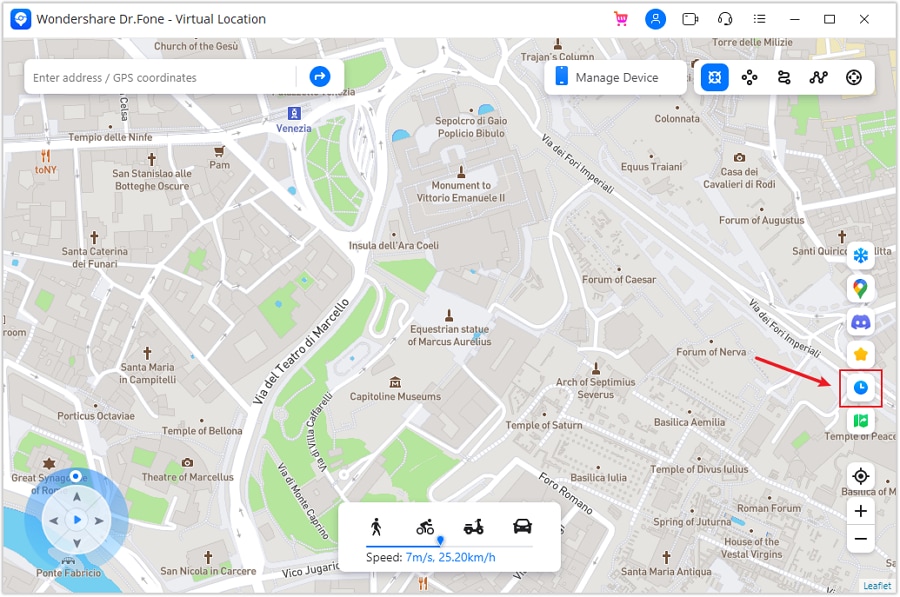
Step 2Access Any Location from the History
Select the Go button adjacent to any particular historical record to re-launch a similar simulation for the Oppo Reno 9A device. You can also click Clear All to delete all historical records.

Part 7: Favorite List
You can also set up favorite locations within the platform to define quick accessibility to your favorite locations. To do that, you have to follow the guidelines shown next:
Step 1Favorite Specific Locations
While setting up locations in Jump Teleport Mode, One-Stop Route, or Multi-Stop Route, you can tap on the Favorite icon adjacent to every marked location or favorite an entire route with the Favorite icon on the top of the left panel.
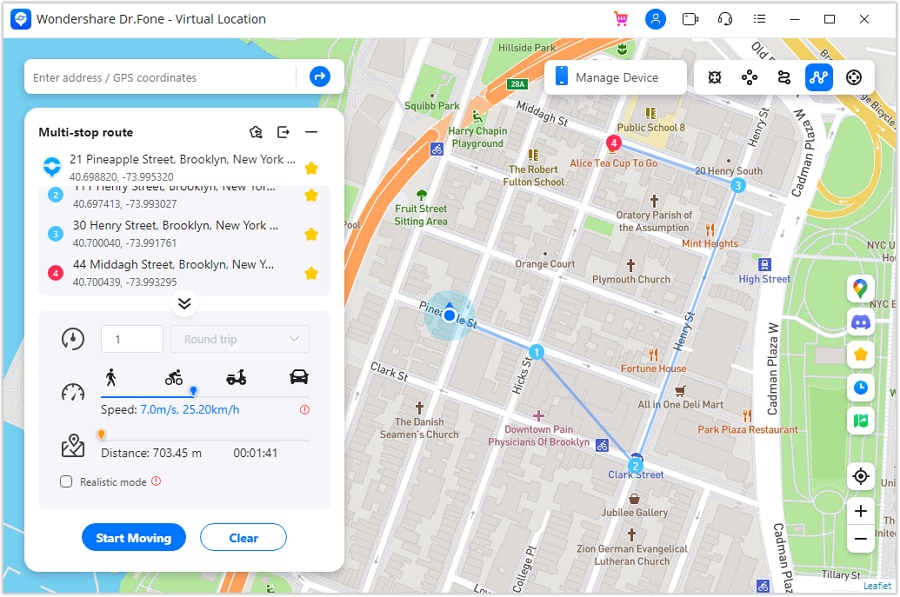
Step 2Access your Favorite Section
To look for your favorite locations, look for the Favorite icon on the right pane to open a list containing all locations you have marked. You can choose the Move option to automatically move into a particular location in no time.
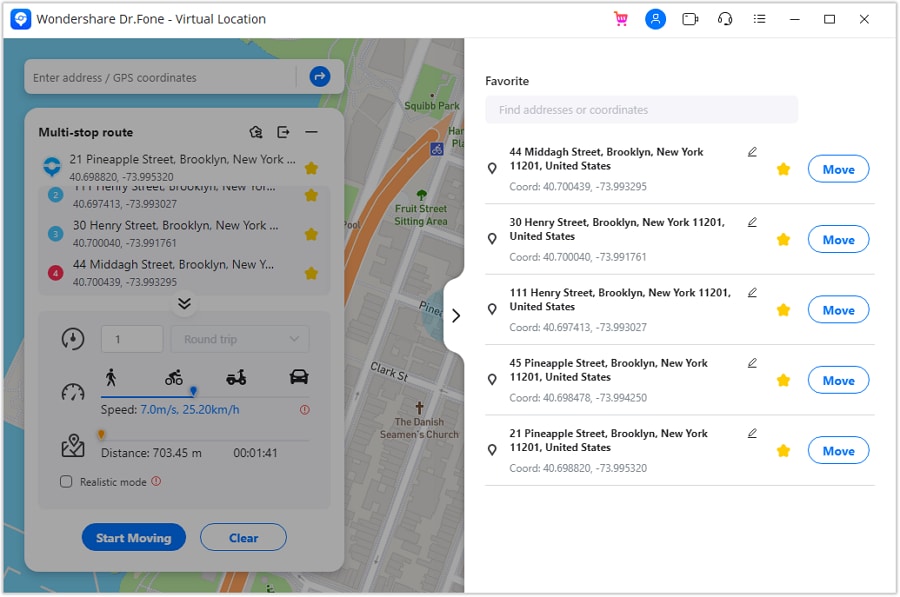
- Title: How to Stop Google Chrome from Tracking Your Location On Oppo Reno 9A? | Dr.fone
- Author: Nova
- Created at : 2024-04-03 12:01:11
- Updated at : 2024-04-04 12:01:11
- Link: https://change-location.techidaily.com/how-to-stop-google-chrome-from-tracking-your-location-on-oppo-reno-9a-drfone-by-drfone-virtual-android/
- License: This work is licensed under CC BY-NC-SA 4.0.

